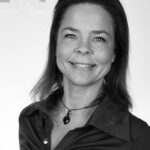Í þessari skýrslu eru teknar saman niðurstöður vöktunar á óæskilegum efnum í ætum hluta sjávarfangs 2024. Vöktunin hófst árið 2003 fyrir tilstuðlan þáverandi Sjávarútvegsráðuneytis, núverandi Matvælaráðuneytið, og sá Matís ohf. um að safna gögnum og útgáfu á skýrslum vegna þessarar kerfisbundnu vöktunar á tímabilinu 2003-2012. Vegna skorts á fjármagni í þetta vöktunarverkefni var gert hlé á þessari mikilvægu gagnasöfnun sem og útgáfu niðurstaðna á tímabilinu 2013-2016. Verkefnið hófst aftur í mars 2017 en vegna fjárskorts nær það nú eingöngu yfir vöktun á óæskilegum efnum í ætum hluta sjávarfangs úr auðlindinni sem ætlað er til manneldis, en ekki fiskimjöl og lýsi fyrir fóður. Af sömu ástæðu eru ekki lengur gerðar efnagreiningar á PAH og PBDE efnum.
Markmiðið með verkefninu er að sýna fram á stöðu íslenskra sjávarafurða m.t.t. öryggi og heilnæmis og hægt að nýta gögnin við gerð áhættumats á matvælum til að tryggja hagsmuni neytenda og lýðheilsu. Verkefnið byggir upp þekkingargrunn um magn óæskilegra efna í efnahagslega mikilvægum tegundum og sjávarafurðum, það er skilgreint sem langtímaverkefni þar sem útvíkkun og endurskoðun er stöðugt nauðsynleg.
Almennt voru niðurstöðurnar sem fengust 2024 í samræmi við fyrri niðurstöður frá árunum 2003 til 2012 sem og 2017 til 2023. Niðurstöðurnar sýndu að íslenskar sjávarafurðir innihalda óverulegt magn þrávirkra lífrænna efna s.s. díoxín, PCB og varnarefni. í þessari skýrslu voru hámarksgildi Evrópusambandsins (ESB) fyrir díoxín, díoxínlík PCB (DL-PCB) og ekki díoxínlík PCB (NDL-PCB) í matvælum samkvæmt reglugerð nr. 2023/915 notuð til að meta hvernig íslenskar sjávarafurðir standast kröfur ESB. Niðurstöður ársins 2024 sýna að öll sýni af sjávarafurðum til manneldis voru undir hámarksgildum ESB fyrir þrávirk lífræn efni og þungmálma. Þá reyndist styrkur svokallaðra ICES6-PCB efna vera lágur í ætum hluta sjávarfangs, miðað við hámarksgildi ESB samkvæmt reglugerð nr. 2023/915. Sömuleiðis sýndu niðurstöðurnar að styrkur þungmálma, t.d. kadmíum (Cd), blý (Pb) og kvikasilfur (Hg) í íslenskum sjávarafurðum var alltaf undir hámarksgildum ESB.
_____
This report summarises the results obtained in 2024 for the screening of various undesirable substances in the edible part of Icelandic marine catches.
The main aim of this project is to gather data and evaluate the status of Icelandic seafood products in terms of undesirable substances and the data can be utilised to estimate the exposure of consumers to these substances from Icelandic seafood and risks related to public health. The surveillance programme began in 2003 and was carried out for ten consecutive years before it was interrupted in 2013. The project was revived in March 2017 to fill in knowledge gaps regarding the level of undesirable substances in economically important marine catches for Icelandic export. Due to financial limitations the monitoring now only covers screening for undesirable substances in the edible portion of marine catches for human consumption and not feed or feed components. The limited financial resources also required the analysis of PAHs and PBDEs to be excluded from the monitoring, providing somewhat more limited information than before. However, it is considered a long-term project where extension and revision are constantly necessary.
In general, the results obtained in 2024 were in agreement with previous results on undesirable substances in the edible part of marine catches obtained in the monitoring years 2003 to 2012 and 2017 to 2023.
In this report from the monitoring programme, the maximum levels for dioxins, dioxin-like PCBs and non-dioxin-like PCBs in foodstuffs (Commission Regulation 2023/915) were used to evaluate how Icelandic seafood products measure up to limits currently in effect.
The results show that in regard to the maximum levels set in the regulation, the edible parts of Icelandic seafood products contain negligible amounts of dioxins, dioxin like and non-dioxin-like PCBs. In fact, all samples of seafood analysed in 2024 were below EC maximum levels.
Furthermore, the concentration of ICES-6-PCBs was found to be low in the edible part of the marine catches, compared to the maximum limits set by the EU (Commission Regulation 2023/915). The results also revealed that the concentration of toxic trace elements, i.e., cadmium (Cd), lead (Pb) and mercury (Hg) in the edible part of marine catches were below the relevant maximum limits set by the EU in all samples.


